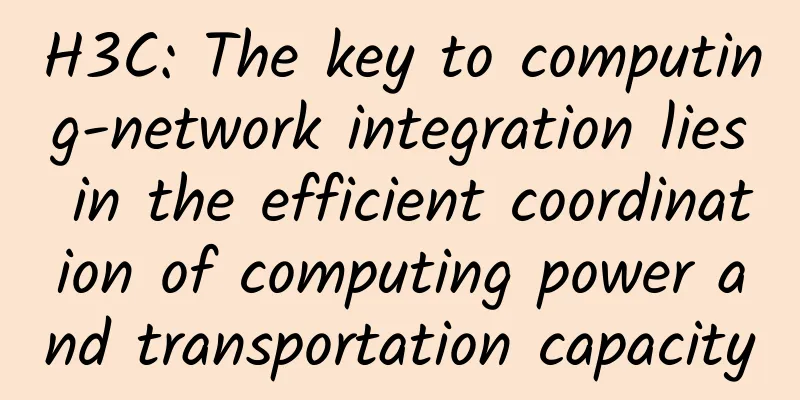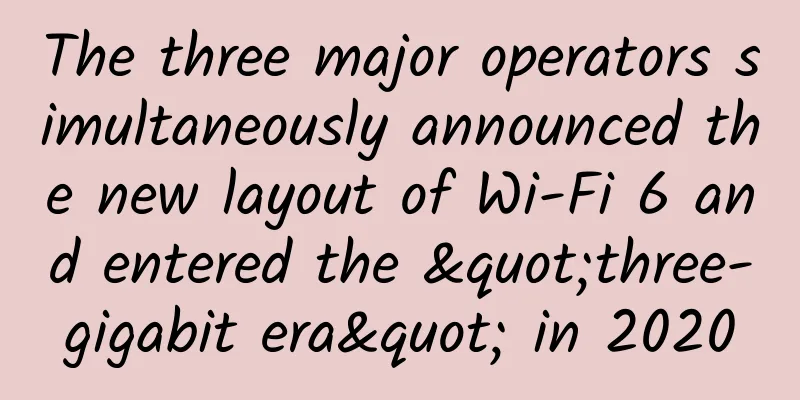Don’t worry, tomorrow’s 5G may be “today’s high-speed rail”

|
30 seconds quick read 1. On the first anniversary of the official commercial use of 5G in China, doubts about 5G have intensified, with some saying that "5G technology is very immature, the operating costs are extremely high, and it is difficult to digest the costs", "5G is just a scam by equipment manufacturers and will inevitably fail commercially", etc. 2. For a time, the prospects for the development of 5G in China were cast into a thick shadow.
We need to look at the development of 5G in my country objectively. We must not be blindly enthusiastic, nor should we belittle ourselves or lose confidence. In other words, we should not only "look at tomorrow from today", see the challenges encountered in the development of 5G, and develop 5G in accordance with objective laws, but also "look at the present from tomorrow" and maintain strategic determination and confidence. Many times, when we look back at the past, we often find that the things that troubled us at the time are now clear. Indeed, 5G development is still facing many challenges and difficulties, such as immature technology, lack of large-scale application, heavy investment burden on operators, etc. It is normal to encounter these problems, because we are still in the early stages of 5G development. It is abnormal not to encounter problems, and it is really terrible not to realize the existence of problems. The key is to pay attention to problems and solve them, and never give up in the face of difficulties. In the 5G era, my country is in the leading position for the first time. Unlike the past 1G, 2G, and 3G, we basically adopted the mature commercialization in foreign countries. As Academician Wu Hequan said, in the previous generations, we had less risk of trial and error, but we paid the price of the market. We had to bear the increased product costs due to the lag of our own patents, and the industry chain lost the opportunity to lead. In the 5G era, we need to try and error and solve problems by ourselves. From a technical perspective, the development of 5G did not happen overnight, but is constantly maturing and becoming stronger. The current maturity of 5G is in line with the development laws of the mobile communications industry. For example, the 5G R16 standard has much higher capability requirements than the R15 standard, including in network slicing, enhanced ultra-reliable low-latency communications, and precise positioning. These all need to be continuously explored and improved in the process of solving problems. From a business perspective, operators are indeed facing the pressure of huge 5G investment and high operating costs, and these issues must be taken seriously. In particular, the high cost of electricity is a particularly prominent problem. According to an insider of an operator, the average annual electricity bill for each of their 5G base stations is 30,000 yuan. At present, my country has built and opened more than 600,000 5G base stations. According to this calculation, the annual electricity bill expenditure of operators for 5G base stations is as high as 18 billion yuan. The bigger trouble is to come, because to achieve the same coverage level as the 4G network, the number of 5G base stations is about twice that of 4G (the current scale of 4G base stations in my country is about 5.5 million), and a huge number of indoor small base stations need to be built. If the 5G electricity fee level cannot be reduced, when the 5G network is fully built and rolled out, the annual 5G electricity fee expenditure of operators will exceed 200 billion yuan, which will form a black hole that devours the profitability and future development of operators. Image source/Internet However, these problems are not unsolvable, and we cannot conclude that 5G will face commercial failure based on them. Taking 5G electricity charges as an example, local governments have introduced a series of measures to ease the pressure of electricity charges, such as promoting the transformation of indirect power supply to direct power supply, electricity fee subsidies, etc. Operators are also promoting precise network construction, on-demand network construction, and smart power saving measures to further reduce electricity bills. According to Ericsson's judgment, with joint breakthroughs in the industrial chain, a multi-pronged approach in terms of products, construction, and operations is expected to reduce the energy consumption per bit of 5G to the same level as 4G. We must have the vision to see real problems, and we must also have the perspective and confidence to "look at today from the perspective of tomorrow". Difficulties that seem as huge as a mountain now may seem like just a small slope when we look back in the future. One year after 5G was put into commercial use, my country has delivered a remarkable performance that has attracted worldwide attention, taking the lead in network construction, industrial policies, and ecosystem maturity. We must recognize the problems, but we should not avoid talking about the achievements. Over the past year, my country has built the largest number of 5G sites in the world, forming the widest coverage and user scale. In terms of industry expansion, 5G will usher in an explosion point in the C-end market. At the 2020 World VR Industry Conference Cloud Summit held recently, Ding Yun, President and Executive Director of Huawei's Carrier BG, said that the value inflection point of 5G To C will soon arrive, and 5G innovative services for individuals will soon enter a period of rapid development. According to Rogers' innovation diffusion curve theory, when the number of people using innovative things in a social system reaches 10%-20%, the value growth will enter the "take-off stage". At present, the number of 5G package users and 5G terminal connections has exceeded 150 million, accounting for more than 10% of the total population. Rogers's innovation diffusion model source/network In the B-end market, although some typical cases have been born, the integration of 5G and vertical industries still needs further exploration and promotion. According to Wu Hequan, mobile communications gave birth to new business forms only after the network capabilities were available. There is reason to believe that many new business forms of 5G will appear in a few years. At present, it is necessary to moderately advance the deployment of 5G networks, cultivate the ecosystem, and form a virtuous model of "building to promote use". "Looking to tomorrow from today" requires us to be realistic and pragmatic in promoting the development of 5G. "Looking at the present from the perspective of tomorrow", we will have greater confidence in developing 5G, just like China's high-speed rail. Although it encountered great doubts at the beginning, it has now become a Chinese brand and promoted the higher-quality development of China's economy. I believe that 5G will be the same. |
<<: How to implement Nodejs inter-process communication
>>: Double 11 Carnival, drink this bowl of "traffic control" soup
Recommend
Twenty trends that will impact the information and communications industry in 2023
Attack and start again! As we bid farewell to the...
ProfitServer: 50% off VPS in Hong Kong/Singapore/Netherlands/Germany, unlimited traffic, starting at $2.88 per month
ProfitServer has launched a promotion to celebrat...
How fiber optic networks can create more efficient and secure connections
We live in a technologically advanced age where h...
Alibaba Cloud Double 11 Carnival: Cloud server annual payment starts from 85 yuan, cloud database starts from 19.9 yuan/year, com domain name starts from 23 yuan
When talking about domestic cloud server manufact...
China Telecom faces four major challenges in network reconstruction of SDN/NFV practice
On July 11, 2016, China Telecom released the &quo...
RepriseHosting: $28.54/month-L5640/16G memory/240G SSD+8TB HDD/1Gbps bandwidth/Seattle data center
RepriseHosting recently launched a limited-editio...
There are four major challenges in the development of 5G. The next 2-3 years will be a critical period for the development of 5G.
A total of more than 700,000 5G base stations hav...
Let’s talk about the Vrrp protocol?
[[374759]] This article is reprinted from the WeC...
VMISS 30% off: Los Angeles/Japan/Hong Kong VPS monthly payment starts from 3.5 Canadian dollars (≈ RMB 18 yuan)
VMISS is a new merchant founded in Canada. It cur...
Zhang Jinrui, Beijing Municipal Bureau of Economics and Information Technology: Beijing accelerates 5G gigabit network applications to create a new benchmark for the digital economy
At the "Third 5G Gigabit Network Industry Fo...
Huawei's Shi Jilin: "Intelligent Body" requires innovation and development from customers and partners
On September 24, during Huawei Connect 2020, Huaw...
Foxit Kunpeng OFD technology debuts at the 7th Military Expo to help the information construction of party, government and military documents
From July 5 to 7, 2021, the "9th China Comma...
Let’s talk about how 5G applications can empower thousands of industries
Based on the transmission characteristics of lar...
Cloudie: Hong Kong/South Africa dedicated server monthly payment starting from US$50, 100M bandwidth unlimited traffic
Cloudie is a Hong Kong IDC Internet service techn...
HTTPS - An easy-to-understand explanation of the HTTPS protocol to solve interview problems
I have read some information about the working pr...









